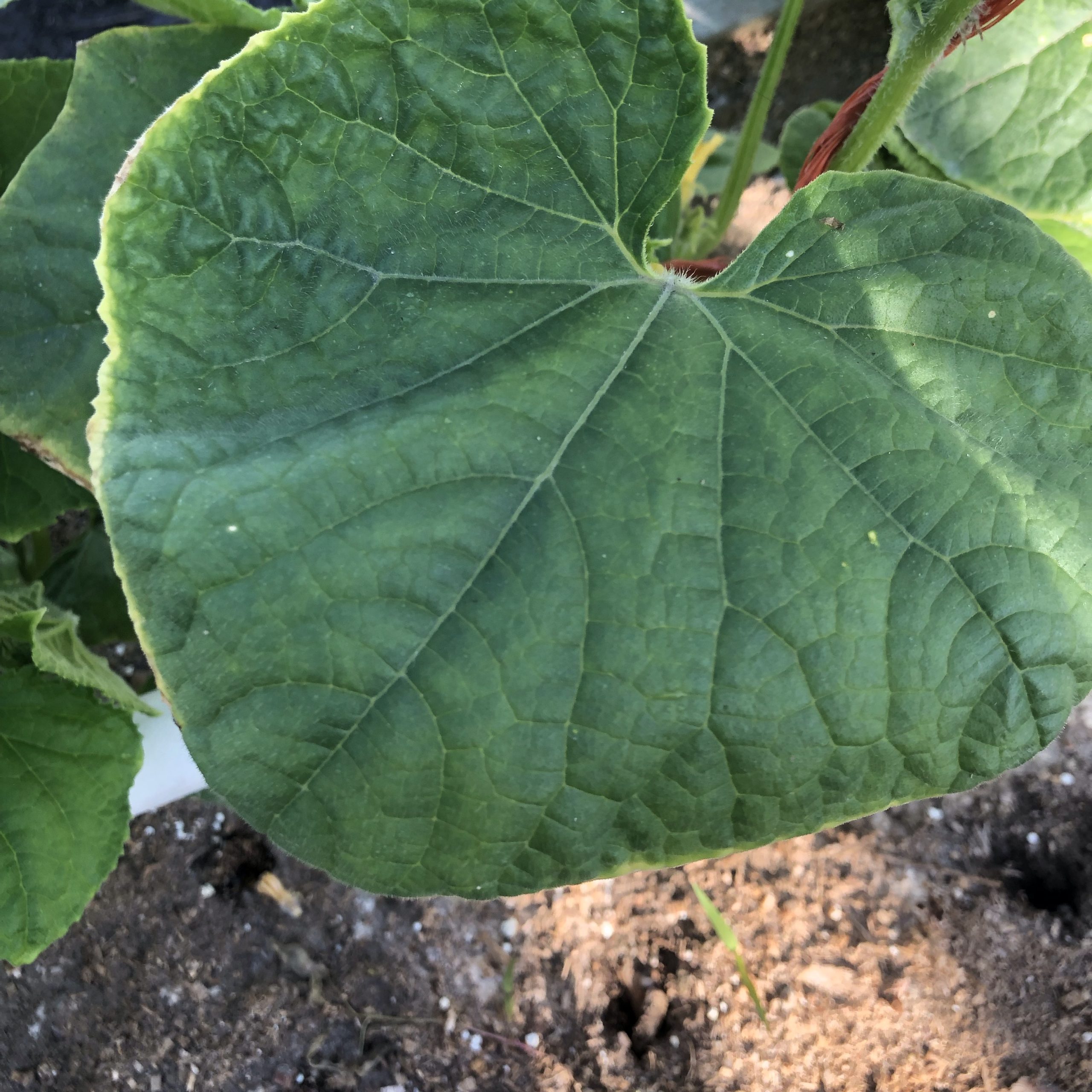Potassium nutrient deficiency in cucumbers

Potassium deficiency in our cucumbers
We have a potassium deficiency in our garden on cucumbers that needs addressed. n this post, I will show you how to identify and treat this deficiency in your own garden. We will describe the visual symptoms, show you a picture, and explain how to correct the deficiency.
Visual indication of potassium deficiency in cucumber plants
Early visual symptoms of a potassium deficiency in cucumbers is a yellowing of the leaf along its edges. It is a distinct yellowing and is easily identifiable once you know the symptoms. In the picture below is an example of early symptoms of this deficiency in a cucumber leaf.
If left untreated, the symptoms of the potassium deficiency will get worse. In advanced stages the yellow edge of the leaf will become necrotic. White dots will begin to appear in the leaves. Young leaves will be come crinkled. You will also see tears in the leaves. Ideally the corrections are made in the early stages of the deficiency.

How to correct potassium deficiency in cucumber plants
Correcting these deficiencies is easy to do. Simply apply muriate of potash (0-0-60) at the rate of 1/2 ounce per linear foot in the row where the deficiency is seen. Water the potash in well with a watering wand. It may take a week or more before you can determine if the deficiency was corrected.
Avoid slow release potash
Some companies offer plant nutrients in a slow release formula. Avoid slow release potash if you are trying to correct that problem in your cucumber plants. Your cucumbers need those nutrients to correct those symptoms now, not in a few weeks. The packaging will indicate if it’s a slow release product.